Independent journalist Ryuichi Kino went to Fukushima I Nuclear Power Plant in June 2013, his fourth. Along the way, he went inside the ex-evacuation zone (no-entry zone within 20-kilometer radius from the plant) and took these photos, and posted on his Flickr site. (Copyright: Ryuichi Kino, all rights reserved.)
Kino wonders aloud in his tweet, "How do they expect the residents to live here? Will the tanks full of contaminated water and the reactor buildings that blew up disappear in five years?"
The following photos are only part of 54 photos of the set.
=================
Naraha-machi, where Fukushima II (Daini) Nuke Plant is located. Farm road lined with plastic bags containing contaminated soil removed from farmland.
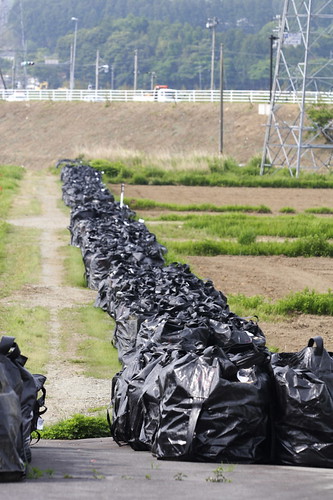
Tomioka-machi, where Fukushima II Nuke Plant is located. The fence bars entry to the "zone where the residents won't be able to return for 5 years". As if the radiation is suddenly higher beyond the fence.
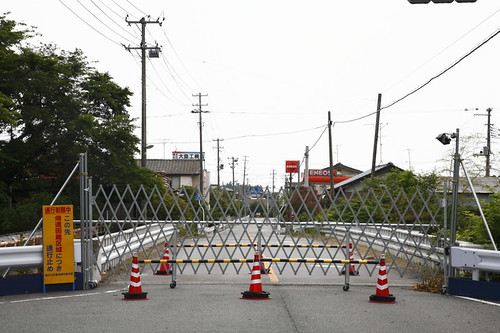
JR Joban Line Yonomori Station in Tomioka-machi. Nature is taking over.

Futaba-machi, from the distance. Half of Fukushima I Nuke Plant is located in Futaba-machi. The arch in the left of the picture says "Nuclear Power to Build Affluent Society and Town".)

Futaba Kosei Hospital. Doctors, nurses, and patients were still trying to evacuate when Reactor 1 building exploded in hydrogen explosion on March 12, 2011. Beds and stretchers abandoned in haste.
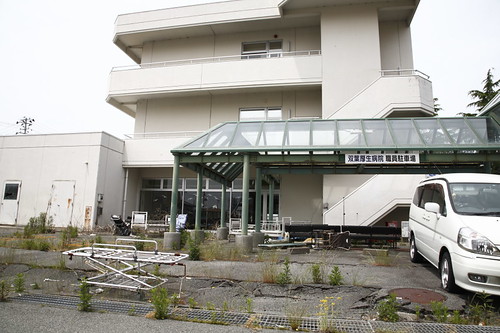
Okuma-machi, with Reverse Osmosis waste storage tanks, exhaust stacks, and tall cranes working on the broken reactors in the backdrop. Would you feel safe, returning to the area?
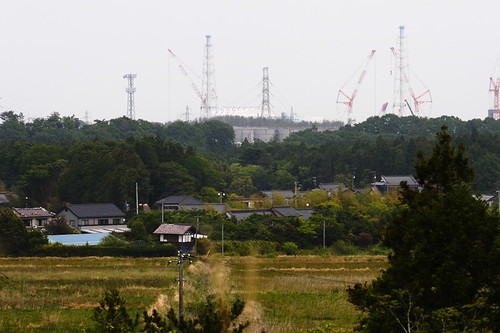
Okuma-machi. It looks almost normal.
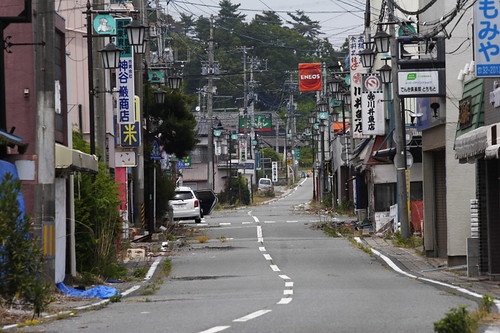
Until you look up close.
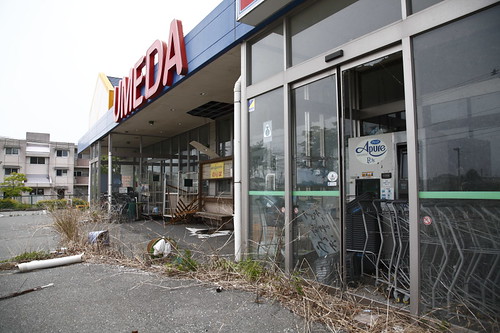
Somewhere within the ex-evacuation zone. The survey meter shows 15.54 microsieverts/hour radiation (gamma).
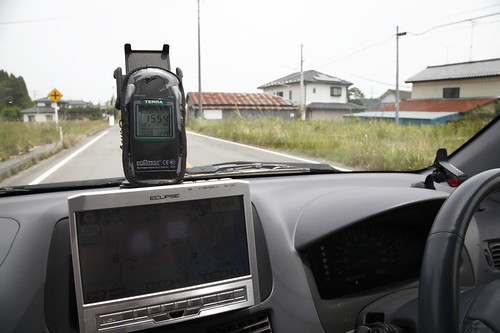
Ukedo District in Namie-machi, along the Pacific Ocean. Total wipe-out.
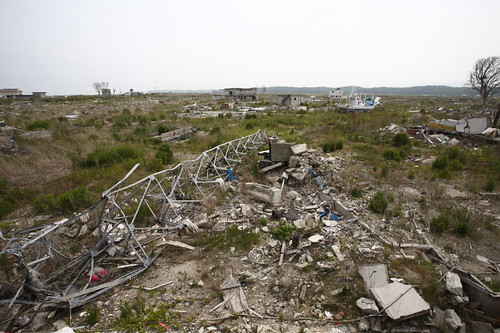
Memorial for the dead, in Ukedo District in Namie-machi. Someone does come here (probably more than one) to offer flowers and drinks.
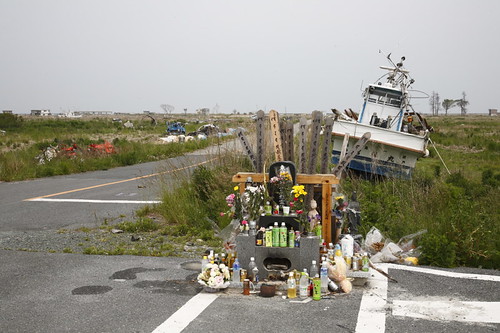
As far as eyes can see, plastic bags with radioactive waste from decontamination along Route 6 in Naraha-machi. As talks of building intermediate storage facilities for contaminated waste have stalled in the ex-evacuation zone, these bags are left like this in many locations.
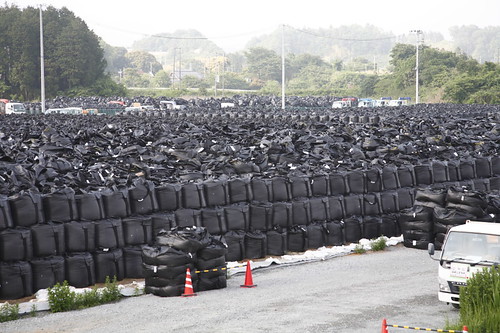
Route 6 in Tomioka-machi. Buses carry workers to Fukushima I Nuclear Power Plant.

Guards manning the checkpoint to the "difficult for the residents to return" zone. Kino writes that they are from private security company, and that:
以前の警戒区域は法的根拠があ ったので警察権を行使することができたけど、今の帰還困難区域は強制力がないので、法的には立ち入りを止めることはできない。中に入らないという制限 は、ある意味で市民の協力により成り立っているということになる。
The evacuation zone had a legal basis, and the police authority was used to enforce it. But the current "difficult for the residents to return" zone does not have legal force behind it, and there is no way to legally stop one from entering the zone. Restriction of entry is, in a way, made possible by the cooperation of the residents.

The national government is essentially telling the the residents, "At your own risk."
For more photos of the ex-evacuation zone by Kino, go to his Flickr page, here.



 Tokyo Time
Tokyo Time
![[Most Recent Quotes from www.kitco.com]](http://www.kitconet.com/charts/metals/gold/t24_au_en_usoz_2.gif)


5 comments:
It is not just "at your own risk" if the people getting in and out carry with them contaminated soil or goods -- it's "at our risk". Here again the goverment is probably being cheap (private guards are usually low paid).
Beppe
This a monument to the folly of human beings. We have created something that cannot be tasted, smelled, felt, heard or seen but is deadly for hundreds of thousands if not millions of years. Furthermore we have allowed it to be released into the environment. How dare do such beings call themselves "wise?"
I can't remember who said it, but someone said "there will be no ghost towns"... Pripyat in Japanese.
When I look at this stuff, the first thing that comes to my mind is "none of this would have happened if people took proper precautions and prioritized safety instead of gambling on nature to be gentle and gunning for profits."
I wonder how many other people feel the same way. Most people just seem to think "oh, there were victims." Well, there wouldn't be anywhere near as many victims for this kind of disaster, had people not been callous in the first place. Prevention is better than cure, etc. It's an important mindset to have.
I always recall that Japanese mayor in the 1970s or so who built a wall to protect a small fishing town from tidal waves, and he was ridiculed to his death for his decision, yet their town is the only one standing now.
People cant live the place like these places in the photo essay, they are always in a trouble..
Post a Comment